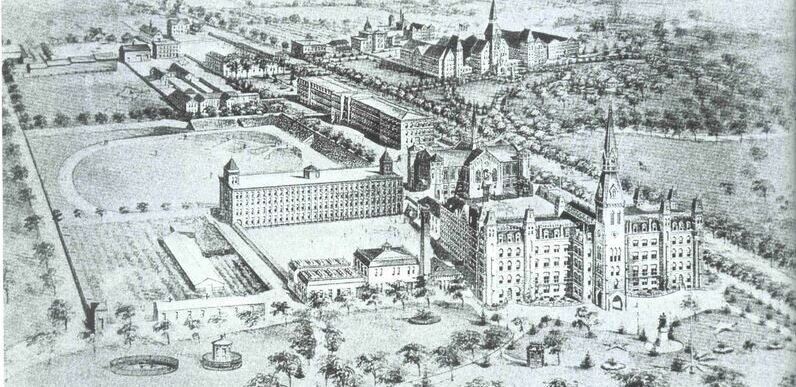Black Baseball: Giants, Giants Split Doubleheader at Ebbets Field
TODAY WE HAVE OUR SECOND GUEST-POST FROM JACOB LELAND (BIO BELOW)
One hundred years ago today, The New York Age reported on a professional baseball game, played the previous weekend, momentous for several reasons. On Saturday, July 11, at 55 Sullivan Place in Flatbush, the hometown Lincoln Giants played a doubleheader against the Atlantic City Bacharach Giants. Sixteen thousand fans attended what was likely the first “Negro League” League baseball game played at Ebbets Field (capacity 23,000, until bleachers were added in 1926).
The Lincoln Giants normally played their home games in the Bronx at Catholic Protectory Oval, an orphanage located on East Tremont Road near what is now near Unionport Road.
Catholic Protectory Oval (from Lawrence Ritter’s East Side, West Side: Tales of New York Sporting Life, 1910-1960.)
There are records of as many as 8,000 fans attending games at Catholic Protectory Oval, though the image above does not show the grandstand that was built in 1920.
Less information is available about Atlantic City's Inlet Park, where the Bacharachs played. Ebbets Field, of course, was a grander stage than either team was accustomed to. [Read more about Ebbets Field in NY 1920’s April 14 Opening Day post.] The National League’s Brooklyn Robins, though, who played their home games there, were on a 19-day, 23-game road trip through Boston, St. Louis, Chicago, Cincinnati, and Pittsburgh–the stage was set in the major league ballpark.
Both teams played in the organization of Eastern Independent Clubs, but this particular matchup had been greatly anticipated: On July 7, The New York Tribune reported that the effort to schedule the two teams against each other had gone on for four years, since the Bacharachs moved from Jacksonville and took the name of Atlantic City's mayor. Even with the major league ballpark available, “it took hours of persuasion to induce the managers to agree to play.” Two days later, with the first pitch still apparently in question, The Chicago Defender exhorted, "On with the game; we all want to see it.”
Beyond the regional rivalry (“the games will really be for blood," wrote The Defender), the two ball clubs featured, and were managed by, two of the great pitchers of the previous decade: Bacharach's "CannonBall" Dick Redding and Lincoln's "Smokey" Joe Williams, the latter of whom would be inducted into the Baseball Hall of Fame in 1999.
Dick Redding (via Baseball Reference)
Williams was also sometimes called “String-bean,” and sometimes called “Cyclone”; both “Cyclone” and “Smokey” appear on his plaque in Cooperstown, but the racially inflected "Smokey" appears more frequently in newspaper accounts.
The New York Age, 10 July 1920, p. 7. Newspapers.com.
The two stars would face off in the opener: Redding pitched a shutout, and Williams surrendered five runs. The nightcap would pit Atlantic City's Harold Treadwell against New York's Luke Archer. Treadwell was pulled in the third inning after giving up four runs, replaced by Red Ryan. Archer got the win, 7-5.
WRITTEN BY JACOB LELAND, JULY 17, 2020.
Jacob Leland is a musician and educator in Oakland. He tweets at @mrdrleland, and plays saxophones and writes songs in the Mosswoods.
TAGS: baseball, sport, African American history, Ebbets Field, Giants



